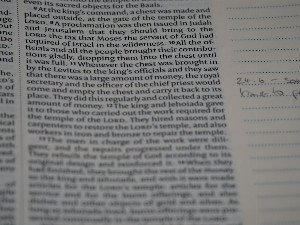Syifa Laiyina Salfinaz Risan, Dadang Herdiansyah
GAMBARAN PERILAKU KERJA PADA PEKERJA KONSTRUKSI PT TRIMATRA LIGUNA PROJECT PBN MENGGUNAKAN MODEL ANTECEDENT BEHEVAIOR CONSEQUENCE
Introduction
Gambaran perilaku kerja pada pekerja konstruksi pt trimatra liguna project pbn menggunakan model antecedent behevaior consequence. Analisis perilaku kerja pekerja konstruksi PT Trimatra Liguna menggunakan model ABC. Mengidentifikasi perilaku aman/tidak aman, serta pengaruh kebijakan, pengawasan, dan imbalan/hukuman K3.
Abstract
Latar Belakang: Pada industri konstruksi umumnya kecelakaan kerja disebabkan oleh faktor manusia atau perilaku tidak aman (unsafe act), faktor peralatan dan faktor lingkungan. Model ABC merupakan kerangka umum yang menggambarkan bagaimana faktor lingkungan dapat mempengaruhi perilaku seseorang dengan melibatkan pengamatan melalui antecedent, behavior, consequence.Metode: Metode penelitian yang digunakan dalam penelitian ini merupakan penelitian kualitatif deskriptif dengan pendekatan cross sectional. Pengambilan data dilakukan dengan observasi dan wawancara mendalam untuk mendapatkan gambaran perilaku kerja pada pekerja proyek konstruksi kemudian ditelaah lebih dalam dan disesuaikan dengan kebutuhan dan divalidasi dengan menggunakan validasi triangulasi sumber dan triangulasi metode. Penelitian ini dilaksanakan di proyek pembangunan gedung PT Pahasa Bahari Nusantara oleh PT Trimatra Liguna. Penelitian diawali dengan kegiatan observasi hingga pengambilan data dan dilakukan mulai dari bulan Mei 2024 sampai dengan bulan Juni 2024 dan melibatkan 5 orang informan.Hasil: Pekerja sudah menerapkan perilaku aman selama bekerja, namun masih terdapat pekerja yang berperilaku tidak aman dikarenakan penerapan peraturan atau kebijakan, pengawasan dan sistem imbalan atau hukuman yang belum efektif.Kesimpulan: Peraturan atau kebijakan, toolbox meeting, pengawasan, ketersediaan alat pelindung diri dan rambu K3 sebagai antecedent dapat mendorong perilaku pekerja. Pujian diberikan untuk perilaku aman, sementara teguran hingga pemecatan diberlakukan untuk perilaku tidak aman sebagai consequence.Saran: Pihak konstruksi diharapkan dapat merancang sistem hukuman dan imbalan yang lebih efektif kepada pekerja, menambah personel untuk melakukan pengawasan kepada pekerja dan memaksimalkan penerapan peraturan atau kebijakan di area kerja.
Review
This paper presents a descriptive qualitative study examining work behavior among construction workers at PT Trimatra Liguna, specifically within the PT Pahasa Bahari Nusantara project, using the Antecedent-Behavior-Consequence (ABC) model. The research addresses a critical issue in the construction industry, where human factors often contribute to accidents. By focusing on unsafe acts and applying a recognized behavioral framework like the ABC model, the study aims to provide insights into the drivers of worker behavior. The findings indicate that while safe practices are generally observed, instances of unsafe behavior persist, primarily attributed to the ineffective implementation of regulations, supervision, and reward/punishment systems. This highlights a pertinent gap between policy and practice, offering valuable practical implications for improving safety culture. The methodology employed, a descriptive qualitative approach with cross-sectional design, is appropriate for generating a rich understanding of the observed behaviors. The use of observation and in-depth interviews, coupled with source and method triangulation, strengthens the data collection and validation process, ensuring a more robust interpretation of the findings. The application of the ABC model provides a structured framework to categorize and analyze the complex interplay between environmental factors (antecedents), worker actions (behaviors), and their resulting outcomes (consequences). The study's ability to identify specific antecedents (e.g., policies, toolbox meetings, PPE availability) and consequences (e.g., praise, warnings, dismissal) that influence behavior offers actionable insights for the construction management team, aligning with the practical recommendations for more effective reward/punishment systems and enhanced supervision. However, the study has some limitations that should be considered. The small sample size of only five informants, while potentially offering depth in qualitative inquiry, significantly restricts the generalizability of the findings to the broader construction workforce or even to the entire project. The short timeframe for data collection (May to June 2024) might also limit the capture of diverse behavioral patterns or the long-term impact of various antecedents and consequences. While the cross-sectional design effectively captures a snapshot, a longitudinal study could offer deeper insights into behavioral changes over time. Future research could benefit from a larger and more diverse sample, potentially incorporating a mixed-methods approach to quantify some observations, thereby strengthening the representativeness and robustness of the conclusions. Further exploration into the *reasons* behind the ineffectiveness of existing policies and supervision would also add valuable depth.
Full Text
You need to be logged in to view the full text and Download file of this article - GAMBARAN PERILAKU KERJA PADA PEKERJA KONSTRUKSI PT TRIMATRA LIGUNA PROJECT PBN MENGGUNAKAN MODEL ANTECEDENT BEHEVAIOR CONSEQUENCE from AN-NUR: Jurnal Kajian dan Pengembangan Kesehatan Masyarakat .
Login to View Full Text And DownloadComments
You need to be logged in to post a comment.
Top Blogs by Rating
The Immortal Jellyfish: Unlock...
By Sciaria
The Unseen Pillars: How Crypto...
By Sciaria
Unlocking Life's Source Code:...
By Sciaria
Favorite Blog
Beyond the Stereotype: Unpacki...
By Sciaria
The Silent Language of Your Bo...
By Sciaria
The Invisible Hand of Defaults...
By Sciaria





